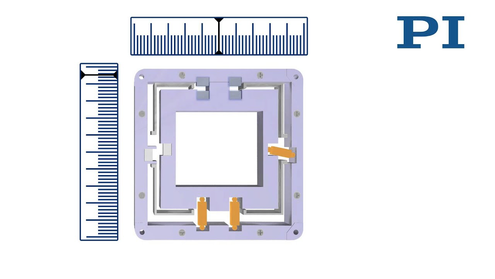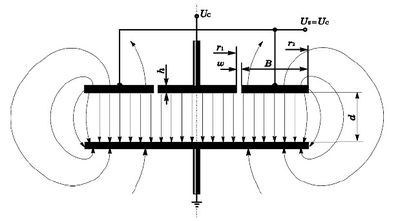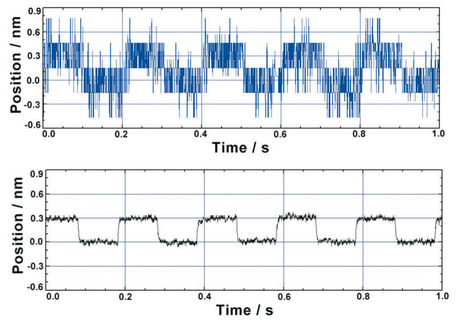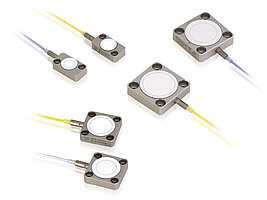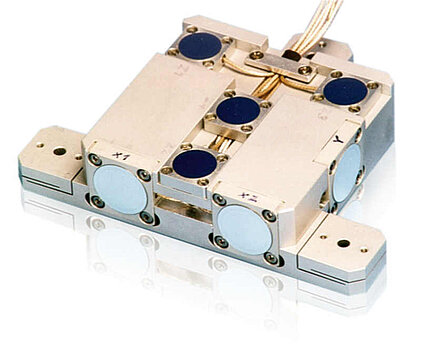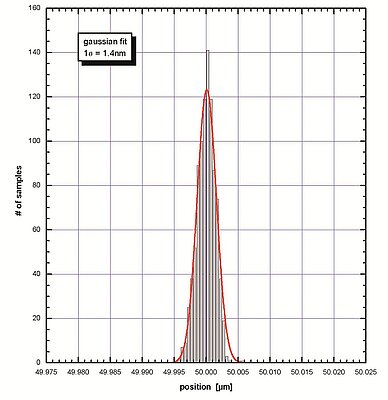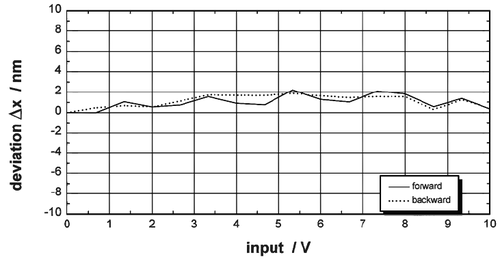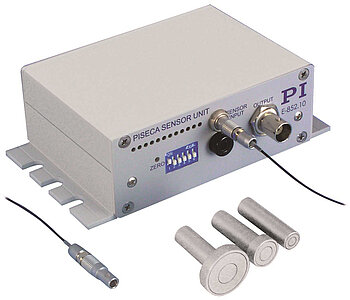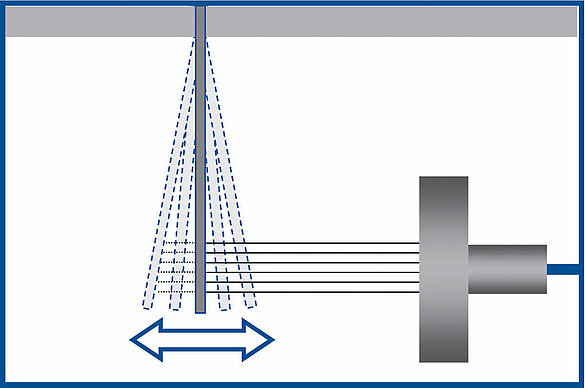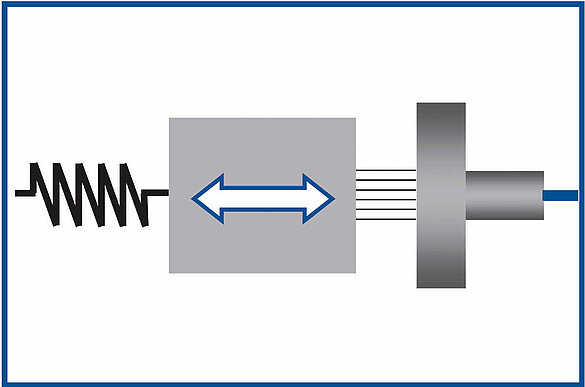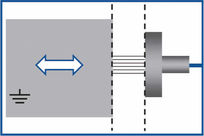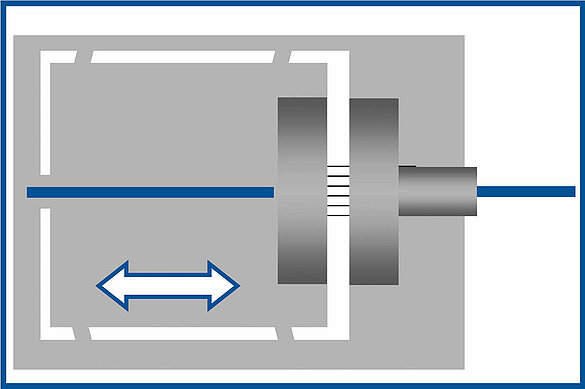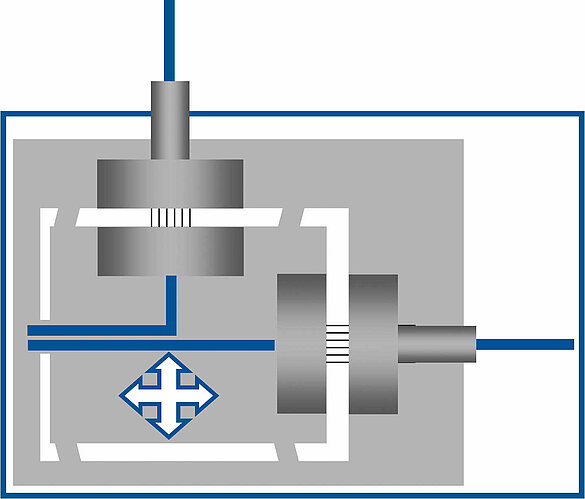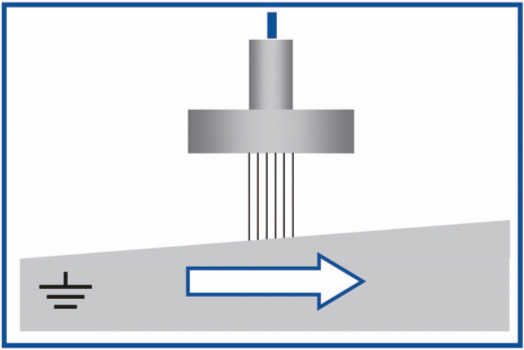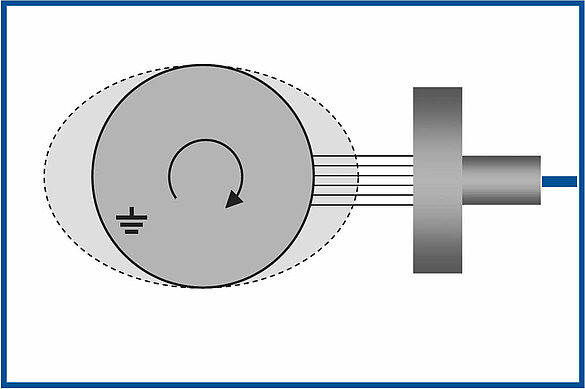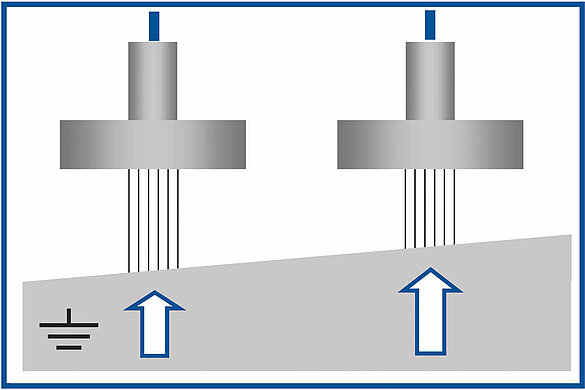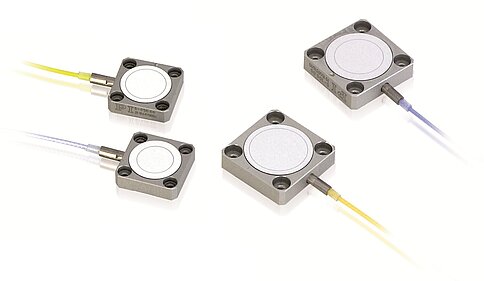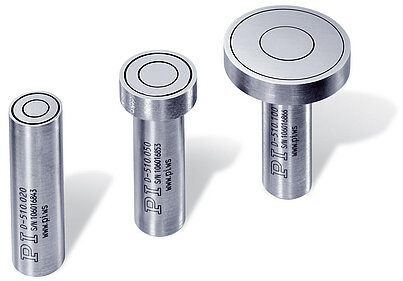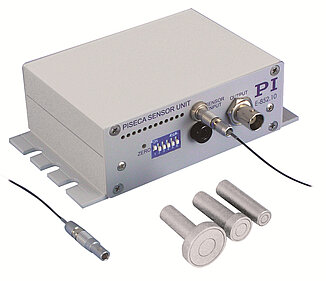Noncontact, Direct Position Measurement with Subnanometer Accuracy
- Absolute measurement of distance, motion, and vibration
- Measuring ranges from a few 10 µm to 2 mm feasible
- Direct metrology: Direct position measurement of moving objects
- Only minimum heating, no scattered light
- Vacuum compatible to 10-9 hPa
- Maintenance-free, no wear
- High bandwidth up to 10 kHz
- High temperature and long-term stability (<0.1 nm/3 h)
- Invar options for maximum temperature stability (5 × 10-6/K)
- Compact one- and two-electrode sensors, customized designs
- Processing electronics in various configuration levels, from analog original equipment manufacturer (OEM) versions to a modular designed digital controller system that can be expanded at any time
The design consists of two conductive surfaces: A high-frequency alternating current generates a homogenous electric field between the two surfaces. As with the parallel plate capacitor, the capacitance is directly related to the distance between the surfaces. The measured quantity is the change in capacitance of the electric field.
Homogenous Electrical Field Ensures High Linearity
The PI arrangement with an additional guard ring electrode generates a very homogenous field in the active area.
In addition, all electronics from PI use integrated linearization methods that correct parallelity errors between the sensor plates. Depending on the material used, capacitive sensors provide excellent long-term stability that is largely independent of thermal influences.
Maximum Accuracy Through Direct Metrology
Suitably arranged in a precision positioning system, capacitive sensors directly measure the actual position of the moving part in relation to the base body (direct metrology). Errors in the drivetrain, actuator, lever arm, or in guiding system do not influence the measurements. Any drift or hysteresis that occurs in the drivetrain is thus automatically eliminated.
Position-controlled piezo nanopositioning systems achieve exceptional motion linearity, high long-term stability and a stiff, fast-responding position servo loop, as external errors are immediately detected by the sensor and fed back.
Signal Processing with Linearization
The processing and measurement electronics only demonstrate minimal noise and employ a linearization system (ILS), that compensates for the influences of parallelity errors between the capacitor plates.
Digital controllers offer the highest accuracy through additional linearization algorithms with higher-order polynomials.
All systems are calibrated at PI and optimized for the intended bandwidth and the measuring range. PI offers signal condition electronics for capacitive sensors in various configuration levels, from analog OEM versions to a modular digital controller system that can be expanded at any time.
Indirect Position Measurement with Strain Gauge Sensors (SGS)
Strain gauge sensors consist of a thin metal or semiconductor foil (piezo resistant), which is attached to the piezo ceramics or, for improved precision, to the guiding system of a flexure stage. This type of position measurement is done with contact and indirectly, since the position of the moving platform is derived from a measurement on the lever, guide or piezo stack. Strain gauge sensors derive the position information from their expansion. Full-bridge circuits with several strain gauge sensors per axis improve thermal stability.
PISeca: Capacitive Single Electrode Sensors
PISeca: Capacitive Single Electrode Sensors
PISeca single-electrode capacitive sensors measure against all kinds of conductive surfaces and are easier to handle mechanically, for example, during installation or cable routing. Their employment is also more versatile, e.g., for detecting motions perpendicular to the direction of measurement.
The E-852 stand-alone processing electronics for PISeca only shows minimum noise and integrates a linearization system. All systems are calibrated at PI and optimized for the intended bandwidth and the measuring range.
>> PISeca Sensors and the corresponding processing electronics are offered as a product by PI.
Measurement of Vibration, Flatness, Thickness
The high dynamics of the PISeca system also allows measurement with excellent resolution of vibrations and oscillations. The evenness of a rotating workpiece or differences in thickness in the nanometer range can thus also be detected. For example, one possible field of application is the production of disk drives or the active compensation of vibration.
Force Sensors with Micronewton Sensitivity
Capacitive single plate sensors are often used as high-resolution force sensors for contact-free measurement in the micronewton range. Here, minimal deviations in distance are measured contact-free over longer distances are resolutions in the subnanometer range without affecting the process to be measured. The defined stiffness of the system enables calculation of the force.
Measuring Distances with Nanometer Accuracy
Capacitive sensors reliably measure shortest distances. The quantity to be measured is the change of capacitance between the surface of the sensor head and the target surface using a homogenous electric field. The achieved accuracy lies the subnanometer range. Absolute values are determined with a well-adjusted, calibrated system.
Parallel Metrology / High-Precision Multi-Axis Measurements
For closed-loop, multi-axis nanopositioning tasks, high-performance stages with capacitive sensors combine direct metrology and paralles kinematics. When used in multi-axis nanopositioning systems, this allows measuring all degrees of freedom at the same time and actively compensating guiding errors (Active Trajectory Control concept). Here, capacitive sensors are the most precise measuring systems to give the best position resolution results.
